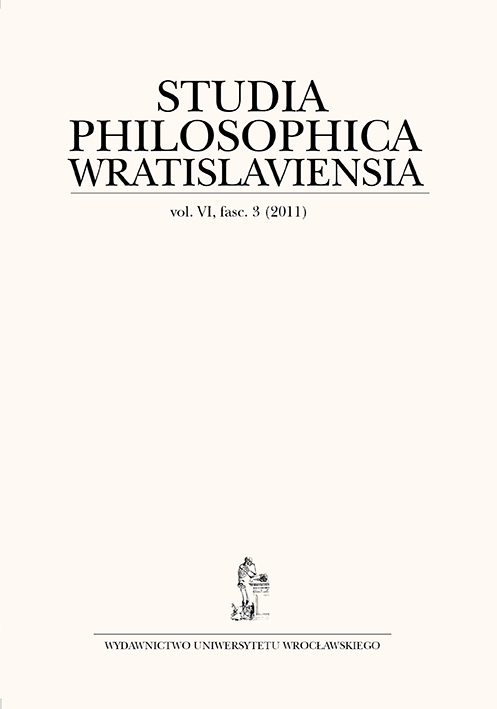

Artykuły

The Development and Meaning of the Theory of Relations in C.S. Peirce’s Philosophical System and Semeiotic. Some of the Implications of a Sign as a Triadic Relation
„The title of creator of the theory of relations was reserved for C.S. Peirce” — this is how A. Tarski, in his article On the Calculus of Relations “The Journal of Symbolic Logic” 6 1941, begins his presentation of the American philosopher’s input into the creation and development of the theory of relations. He gives Peirce and his follower Schröder all the credit for the real development of this branch of logic during the 45 years since the second half of the 1890s, despite the fact that between the years 1910 and 1913 Russel and Whitehead published their Principia Mathematica, which made the theory of relations the central part of their logical system. In this article I am going to discuss two crucial moments in the development of Peirce’s theory of relations which prove the hypothesis that Peirce undertook the subject of relations incessantly throughout his scientific career and that this issue significantly influenced other fields of his research, especially philosophy and semiotics, which in turn constitute the basis of the whole epistemology. In 1870 Peirce published the ground-breaking expansion of Boole’s algebra, i.e. Description of a Notation for the Logic of Relatives, Resulting from an Amplification of Boole’s Calculus of Logic DNLR. Subsequent stages of logical research led to the development of the theory of relations, which in a later period substantially influenced the theory of sign, i.e. semiotics. In 1885 Peirce published On the Algebra of Logic: A Contribution to the Philosophy of Notation, a work widely read and commented in the logicians’ milieu. After long years of research Peirce was convinced that every relation that connects more than three elements can be reduced to a three-part relation, being also an ontological basis of sign relations. Semiotics is crucial to his system by the fact that all possible cognition is mediated through signs. Being a sign means being in a relation and is not an immanent feature of any object or being; therefore, it does not stem from the essence or nature of things. Nothing is a sign by definition but everything can become a sign. We can speak of a sign when it is constituted by a relation connecting a sign the First in a triadic relation, its object the Second and an interpretant the Third for the sake of their e.g. similarity, material connection, logical sequence, etc. Each of the elements of this type of a relation can be an autonomous sign. The relational character of a sign enables the epistemological processes of semiosis constituting subsequent signs-interpretants which in turn become an element of more general triadic relations, creating extended chains of signs. Assuming that a sign is a relation also enables formalisation of the semiotics and subsequently the transformations of a triadic sign, which as a consequence may lead to forsaking classic bivalent concept of truth in favour of degrees of representation M. Bense.